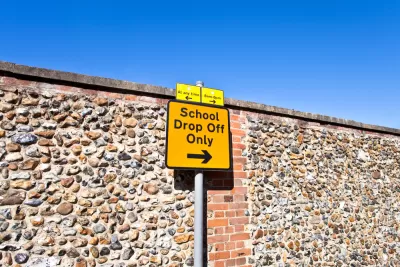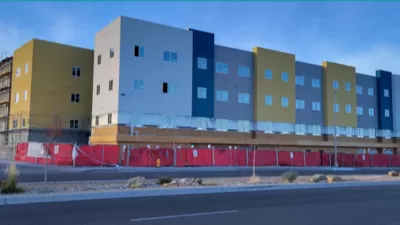Laura Bliss argues that implicit discrimination in the boundary-shaping policies of school districts necessitates reform of the property-tax funding system.

An interactive map of school districts across the country, designed by the non-profit EdBuild, show geographically illogical boundaries similar to those drawn by politicians for electoral districts. Low-income districts such as the Camden city school district in Camden, N.J. are disproportionately large and surrounded by many small, affluent districts, leading to "scattered, wasted state and local resources, and to low educational and economic outcomes for students in Camden," writes Laura Bliss. District boundaries such as those in Toledo, OH, are incontiguous, "and African-American students are forced to bus across multiple district lines to get to schools that will admit them, due to a legacy of intentional boundary-drawing to keep them out of certain districts."
According to the latest Census report on public school revenues, 45.3 percent of revenue comes from local sources, with 65 percent of that coming from local property taxes. Bliss suggests that public school districts remain racially and socio-economically segregated 50 years after Brown v. Board of Education because this system of property tax funding incentivizes the shaping of districts according to income levels.
The Supreme Court recently ruled that "disparate impact" liability falls under the Fair Housing Act (FHA). Thus, the concentration of tax credit distribution to real estate developers building low-income housing in predominantly African-American neighborhoods is an implicit form of racial discrimination and violates the FHA. Like the steering and redlining practices of the previous century, the tax incentives to concentrate low-income housing in African-American neighborhoods makes housing in white neighborhoods less available to minorities. Writing for the majority, Justice Kennedy opines: "Much progress remains to be made in our Nation’s continuing struggle against racial isolation...we must remain wary of policies that reduce homeowners to nothing more than their race."
Bliss writes, "The disparate-impact ruling was a national victory for fair housing. Now, more than ever, we need one for financing fair education."
FULL STORY: How School Districts Seal Their Students Into Poverty

Alabama: Trump Terminates Settlements for Black Communities Harmed By Raw Sewage
Trump deemed the landmark civil rights agreement “illegal DEI and environmental justice policy.”

Study: Maui’s Plan to Convert Vacation Rentals to Long-Term Housing Could Cause Nearly $1 Billion Economic Loss
The plan would reduce visitor accommodation by 25% resulting in 1,900 jobs lost.

Planetizen Federal Action Tracker
A weekly monitor of how Trump’s orders and actions are impacting planners and planning in America.

Wind Energy on the Rise Despite Federal Policy Reversal
The Trump administration is revoking federal support for renewable energy, but demand for new projects continues unabated.

Passengers Flock to Caltrain After Electrification
The new electric trains are running faster and more reliably, leading to strong ridership growth on the Bay Area rail system.

Texas Churches Rally Behind ‘Yes in God’s Back Yard’ Legislation
Religious leaders want the state to reduce zoning regulations to streamline leasing church-owned land to housing developers.
Urban Design for Planners 1: Software Tools
This six-course series explores essential urban design concepts using open source software and equips planners with the tools they need to participate fully in the urban design process.
Planning for Universal Design
Learn the tools for implementing Universal Design in planning regulations.
Caltrans
Smith Gee Studio
Institute for Housing and Urban Development Studies (IHS)
City of Grandview
Harvard GSD Executive Education
Toledo-Lucas County Plan Commissions
Salt Lake City
NYU Wagner Graduate School of Public Service





























